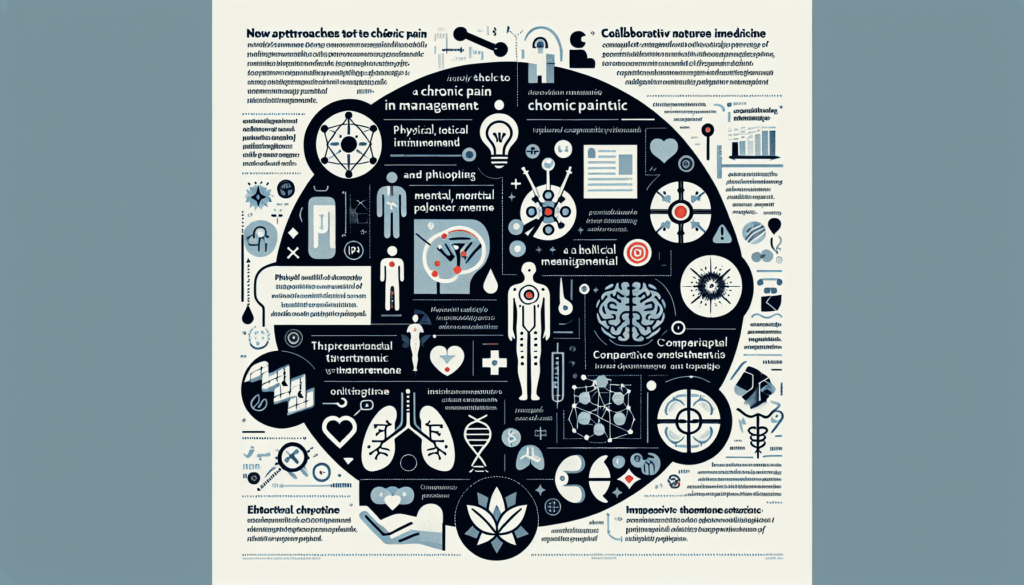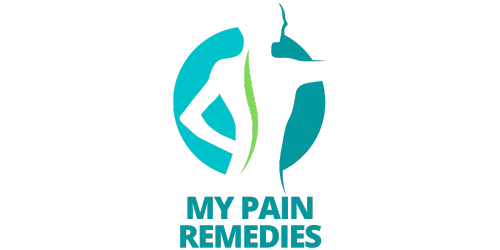Imagine a world where chronic pain is not a hindrance, but something that can be managed effectively. Welcome to the realm of Progressive Pain Management, a groundbreaking approach that transcends traditional methods to provide relief and improve quality of life. By addressing pain from a holistic standpoint, incorporating innovative techniques such as mindfulness, physical therapy, and alternative therapies, Progressive Pain Management offers a beacon of hope for those suffering from persistent discomfort. Say goodbye to endless prescriptions and hello to a new era of pain management that truly understands and supports your journey towards a pain-free existence.

Understanding Pain Management
Pain management refers to the medical approach and strategies used to alleviate and control pain in individuals. It involves various techniques and methods aimed at reducing pain, improving overall well-being, and enhancing the quality of life for individuals suffering from chronic or acute pain.
Types of Pain
Pain can be categorized into different types, each requiring a unique approach to treatment. Acute pain is temporary and typically results from injuries or surgeries, while chronic pain lasts for longer periods, often lasting for months or even years. Neuropathic pain, which stems from damage to the nervous system, and nociceptive pain, caused by tissue injury or inflammation, are two common types of chronic pain.
Importance of Progressive Pain Management
Progressive pain management is vital because it seeks to address pain comprehensively, not just by alleviating the symptoms but also by focusing on the underlying causes and promoting overall well-being. By taking a proactive and holistic approach, progressive pain management aims to empower individuals to actively participate in their pain management journey and enhance their quality of life.
Traditional Approaches to Pain Management
Traditionally, pain management has involved primarily medication-based treatments, physical therapy, and psychological interventions. While these approaches have their merits, they also have limitations and challenges that call for a more comprehensive and progressive approach.
Medication-based Pain Management
Medication-based pain management typically involves the use of various analgesics, such as nonsteroidal anti-inflammatory drugs (NSAIDs), opioids, and local anesthetics. While these medications can provide temporary relief, they often come with side effects and risks, such as dependency, gastrointestinal issues, and respiratory depression.
Physical Therapy
Physical therapy plays a crucial role in pain management by addressing underlying physical issues contributing to pain and helping individuals regain strength, flexibility, and mobility. However, its effectiveness can be limited, especially for complex or chronic pain conditions that require a more holistic approach.
Psychological Interventions
Psychological interventions, such as cognitive-behavioral therapy (CBT) and meditation, aim to address the emotional and psychological aspects of pain. While effective in promoting coping mechanisms and reducing distress, they may not fully address the physical component of pain.

Challenges with Traditional Approaches
Despite their widespread use, traditional pain management approaches face several challenges that limit their effectiveness in providing long-term relief and overall well-being.
Side Effects of Medications
Many pain medications can cause unwanted side effects, ranging from mild discomfort to serious complications. These side effects often limit the dose and duration of medication use, leading to incomplete pain relief or the need for additional medication to manage the side effects themselves.
Limited Effectiveness of Physical Therapy
Physical therapy, while beneficial for many, may not provide sufficient relief for certain individuals, especially those with complex or chronic pain conditions. It may not fully address the underlying causes, leading to ongoing pain and limited functional improvement.
Psychological Limitations
Although psychological interventions can help individuals cope with the emotional impact of pain, they may not address the physical aspects or underlying causes. This can result in a disconnect between the emotional and physical experiences of pain, hindering holistic pain management.
Introducing Progressive Pain Management
Progressive pain management offers a new and more comprehensive approach to pain relief and overall well-being. It focuses on addressing pain from multiple angles, considering physical, psychological, and social factors, to provide individuals with a holistic and personalized treatment plan.
Definition of Progressive Pain Management
Progressive pain management involves a proactive and dynamic approach to pain relief and management, with an emphasis on personalized care and the integration of various treatment modalities. It aims to empower individuals to actively participate in their pain management journey and improve their overall quality of life.
Holistic Approach
One key aspect of progressive pain management is its holistic approach, considering the interconnectedness of the physical, emotional, and social aspects of pain. It recognizes that pain is not purely physical but also influenced by psychological and social factors, and addresses these components concurrently.
Integration of Multiple Modalities
Progressive pain management integrates various treatment modalities and techniques to address pain comprehensively. It combines elements from traditional approaches, such as medication-based pain relief and physical therapy, with complementary therapies, including mind-body techniques and lifestyle modifications.
Key Components of Progressive Pain Management
To effectively implement progressive pain management, certain key components should be prioritized in the treatment approach:
Patient-centered Care
A patient-centered approach lies at the heart of progressive pain management. It involves actively involving the individual in their treatment decisions, understanding their unique needs and goals, and tailoring the treatment plan accordingly. By empowering individuals and providing them with a sense of control, patient-centered care promotes better engagement and outcomes.
Multidisciplinary Approach
A multidisciplinary approach is crucial in progressive pain management as it brings together a diverse team of healthcare professionals with different expertise and perspectives. This collaborative effort fosters comprehensive assessment, personalized treatment plans, and effective coordination of care across various disciplines, ensuring a holistic approach to pain management.
Goal-setting and Monitoring
Setting clear goals and monitoring progress is essential in progressive pain management. By establishing measurable objectives, individuals and their healthcare team can track progress and make necessary adjustments to the treatment plan. Regular check-ins and assessments help ensure that the chosen interventions are effective and aligned with the individual’s expectations and priorities.
Modalities in Progressive Pain Management
Progressive pain management encompasses various modalities and techniques to address pain and enhance overall well-being. Some common modalities used in this approach include:
Physical Therapies and Exercises
Physical therapies, such as manual therapy, stretching, and strengthening exercises, play a significant role in progressive pain management. They aim to improve physical function, reduce pain, and enhance overall mobility. Additionally, modalities like heat and cold therapy, ultrasound, and electrical stimulation can be utilized to provide targeted pain relief.
Pharmacological Interventions
Pharmacological interventions, including medications and injections, continue to be an integral part of pain management. In progressive pain management, the use of medications is personalized, with a focus on both pain relief and minimizing side effects. This may involve the use of non-opioid analgesics, adjuvant medications, or targeted injections to specific areas.
Mind-body Techniques
Mind-body techniques, such as meditation, mindfulness, and relaxation exercises, can be effective in managing pain and promoting overall well-being. These techniques help individuals develop self-awareness, reduce stress, and enhance their ability to cope with pain. They can be integrated into daily routines or utilized during specific pain episodes.
Benefits of Progressive Pain Management
Adopting a progressive pain management approach offers several benefits for individuals dealing with pain:
Improved Pain Relief
By integrating various treatment modalities and considering multiple factors contributing to pain, progressive pain management offers a more comprehensive approach to pain relief. This individualized approach can lead to more effective pain management, allowing individuals to experience greater comfort and improved daily functioning.
Minimized Side Effects
A key advantage of progressive pain management is the emphasis on minimizing the potential side effects of interventions, particularly medication-based treatments. By tailoring medication regimens and exploring alternative therapies, healthcare providers can reduce the risk of side effects and optimize pain relief while maintaining overall well-being.
Enhanced Overall Wellness
Progressive pain management takes into account the broader aspects of an individual’s health and well-being, going beyond pain relief alone. By considering physical, emotional, and social factors, this approach seeks to improve overall wellness, promoting better sleep, mood, and quality of life.
Case Studies and Success Stories
Real-life examples of progressive pain management illustrate the positive impact it can have on individuals’ lives. These case studies provide insights into the effectiveness of multimodal treatments and the holistic approach involved in progressive pain management. By showcasing successful outcomes and patient experiences, these stories inspire hope and encourage others to explore this approach.
Overcoming Barriers to Implementing Progressive Pain Management
While progressive pain management holds significant promise, several barriers may hinder its widespread implementation:
Lack of Awareness and Education
A lack of awareness and education among healthcare providers and individuals can limit the adoption of progressive pain management. It is crucial to disseminate information, promote understanding, and provide resources to ensure that all stakeholders are aware of the benefits and principles of this approach.
Healthcare System Obstacles
The current healthcare system may present obstacles to implementing progressive pain management. Limited access to multidisciplinary teams, time constraints, and financial considerations can all impede the incorporation of this approach. Addressing these systemic challenges requires collaboration, policy changes, and advocacy for improved pain management services.
Resistance to Change
Resistance to change, both from healthcare providers and individuals, can hinder the adoption of progressive pain management. Traditional treatment approaches may be deeply ingrained, and individuals may be skeptical about alternative modalities. Open communication, continuous education, and shared decision-making can help overcome resistance and foster a culture of progressive pain management.
Future Trends in Progressive Pain Management
As research and innovation continue to advance, the future of progressive pain management holds exciting possibilities:
Advancements in Technology
Technological advancements, such as wearable devices, virtual reality, and telemedicine, offer new avenues for pain management. These technologies can enhance treatment monitoring, allow for remote support, and provide personalized interventions, expanding access to progressive pain management.
Personalized Pain Management
With advancements in genetic testing and precision medicine, personalized pain management is on the horizon. By identifying individual variability in pain perception and treatment response, healthcare providers can tailor interventions to optimize pain relief and improve treatment outcomes.
Integration of Complementary Therapies
The integration of complementary therapies, such as acupuncture, massage, and herbal medicine, is likely to become more prominent in progressive pain management. By combining evidence-based conventional medicine with holistic approaches, individuals may benefit from a wider range of options and more personalized care.
In conclusion, progressive pain management offers a comprehensive and patient-centered approach to pain relief and overall well-being. By integrating various treatment modalities, addressing physical, psychological, and social factors, and promoting personalized care, progressive pain management empowers individuals to actively engage in their pain management journey and achieve improved pain relief and enhanced quality of life. As awareness grows, barriers are overcome, and innovation advances, the future of progressive pain management holds promising possibilities for individuals seeking effective and holistic pain relief.


